
Break Through: Why We Can't Leave Saving the Planet to Environmentalists
by
Michael Shellenberger
and
Ted Nordhaus
Published 10 Mar 2009
For the party to do that, progressives, liberals, and Democrats must deal with some inconvenient truths of their own. Just as environmentalists must grapple with how global warming challenges the politics of limits, progressives must understand how a half century of prosperity and changing social values challenges materialist liberalism. Globalization and the transition to a postindustrial economy have generated remarkable material wealth, but they have also brought outsourcing, downsizing, and instability. The result is that Americans have seen their wealth and spending power rise, but they have also become increasingly insecure in terms of their employment, retirement, health care, and community.
…
But it’s no longer the case that the poorest Americans’ ability to buy and eat large quantities of food, whenever and wherever they want, is a “tentative proposition at best.” If it were, then the poorest Americans would not be the fattest Americans. Understanding obesity involves understanding the consequences of prosperity. Food today is cheaper than it has ever been. As part of our transition from an industrial to a postindustrial economy, Americans are using and moving their bodies less than they ever have. Jobs require less physical labor and longer commutes. When not working or commuting, Americans are spending a record number of hours sitting in front of their televisions. The obesity epidemic is not just the result of material prosperity but also the result of postmaterial insecurity.
…
When it comes to the state of the American economy, the left insists that Americans are more insecure while the right insists that they are more affluent. The truth is, Americans are both. How is it possible for people to become richer and more insecure at the same time? Part of the answer is that American society has undergone a profound transformation, from an industrial to a postindustrial economy. The economic boom of the late 1990s was characterized by both extraordinary economic expansion and massive corporate downsizing and outsourcing. The new jobs, however high paying, were less secure. While a few individuals might hit the jackpot playing the Internet startup lottery, lifetime employment on the General Motors assembly line where your father spent his entire career was a thing of the past.

Restarting the Future: How to Fix the Intangible Economy
by
Jonathan Haskel
and
Stian Westlake
Published 4 Apr 2022
What Is an Intangibles-Rich Economy? Knowledge, Relationships, and the Postindustrial Economy Since we first wrote about the intangible economy over a decade ago, we’ve spoken about it to a wide range of businesspeople, journalists, investors, economists, and policy makers. One thing we have noticed is that people sometimes assume it means something that it doesn’t. In particular, we found that people associated intangible investment with other modern economic phenomena, such as the knowledge economy or the postindustrial economy. They also often associated it with the tech sector, or in some cases with a sort of dystopian modernity.
…
It is also about their instantiation in a set of relationships.39 Perhaps the reason the intangible economy is often described as the “knowledge economy” is that economists, being cerebral people, find the knowledge aspect of intangibles most salient. But equating intangibles with the knowledge economy is a misleading shorthand, obscuring the importance of relational and expressive capital in the modern economy. The Postindustrial Economy People sometimes describe the intangible economy as postindustrial, a phrase coined by French sociologist Alain Touraine and popularised by Daniel Bell in the 1970s. People sometimes infer from this description that intangible assets are mainly important to service industries and that an intangibles-rich economy is one with many services and little manufacturing.
…
See COVID-19 pandemic Papanikolaou, Dimitris, 58 patent wars, 2–3, 109, 269n43 Peltzman, Sam, 219 personalised pricing, 223–24 Phelps, Edmund, 136 Philippon, Thomas, 30, 41, 242 Phillips curve, 166–67 Piketty, Thomas, 27, 75, 242 Pinter, Gabor, 174 Piton, Sophie, 218 platforms, 114 Plath, Robert, 123 policy: competition, 15; financial and monetary, 14, 162–74, 168f, 170f political bargains, 16 politics, institutions and, 110–12 Posner, Eric, 98 postindustrial economy, 56–59 postmodernism, 7 Preston model, 205 prices, 220–27 priming, 129–30 productivity, 17, 24, 30f, 37, 39–43, 45, 67–70, 68f, 187, 264n31, 265n3 property rights, 93–94, 97–98, 267n13, 268n22 Proud, Steven, 277n22 public funding, 13–14, 140–43, 275n27 public investment, 127–28, 136–37, 145–46, 203 Puga, Diego, 186 Putnam, Robert, 259 quantitative easing (QE), 178, 274n58 Race between Education and Technology, The (Goldin and Katz), 126 Ratnovski, Lev, 152 reciprocity, 92–93 regulation, sectoral, 228–30 remote work.

To Serve God and Wal-Mart: The Making of Christian Free Enterprise
by
Bethany Moreton
Published 15 May 2009
Her mobilization of conservatives succeeded in removing homosexuals from Dade County’s antidiscrimination clause.89 The image of vulnerable human life tossed out as refuse likewise dramatically haunted conservative Christianity after the mid-Â�1970s. Jerry Falwell’s account of his awakening to an active pro-Â�life position invokes a dumpster in Los Angeles overÂ�flowing with the dismembered remains of 1,700 fetal bodies and a trash incinerator in Wichita sending€up hundreds more in smoke, like the victims of Auschwitz.90 The postindustrial economy’s accelerated drive to render people functionally obsolete was figÂ�ured in the imagery of the political Left as the dispossessed, the economic refugees, the reserve army of the unemployed. But its mirror image on the Right was an equally visceral horror at the potential loss of meaning in human reproduction.
…
The countercultural devotees of Buckminster Fuller, Ken Kesey, and the Whole Earth Catalog brought their dreams of antiauthoritarian, transcendent elitism into the cyber revolution in California. Blending their privileged vision as “comprehensive designers” with the decentralized technologies they developed, this loose fraternity marked an entire wing of the postindustrial economy with their conviction that their new tools made them “as gods.” From the Berkeley Free Speech Movement’s rebellion against the university as “knowledge factory,” the West Coast generation thumbed its nose at the men in the gray flannel suits—often their own fathers, whose bureaucratized work lives looked to them like a vision of hell on earth.
…
One out of ev�ery three young people attended college, a ratio that was to hold essentially steady through the end of the century.47 The explosion of the college population that America subsidized after World War II had different effects in the Sun Belt than in the industrial North. In Detroit and Newark, the new crop of students came from the households of second-generation factory workers, the descendants of the late-nineteenth-century immigration wave. For some of them, the increasingly visible shift to a postindustrial economy produced a renaissance on the Left: If the industrial working class was to be replaced by sci�en�tific technocrats running automated industries, as theorists like Daniel Bell and Alain Touraine predicted, then students need not endlessly wait for their parents to charge the barricades from suburbia.48 In the South and parts of the West, however, the accounting and marketing students were fresh off the farm, encountering the punch card without prior experience of the assembly line.
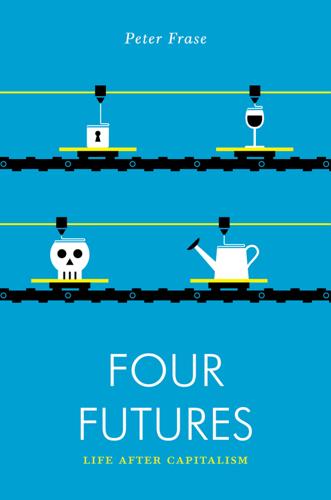
Four Futures: Life After Capitalism
by
Peter Frase
Published 10 Mar 2015
The existence of capitalism as a system of class power, with a ruling elite that will try to preserve itself into any possible future, is therefore a central structuring theme of this book, a theme that I believe is absent from almost every other attempt to understand the trajectory of a highly automated postindustrial economy. Technological developments give a context for social transformations, but they never determine them directly; change is always mediated by the power struggles between organized masses of people. The question is who wins and who loses, and not, as technocratic authors like Costanza would have it, who has the “correct” view of the objective nature of the world.
…
Malthus’s view turned out not to account for the factors that have allowed the Earth to sustain a much larger population at higher living standards than were possible 200 years ago, beginning with increases in agricultural productivity. However, the general theme of material limits to growth recurs in both mainstream and critical left-wing treatments of capitalism. Stanley Jevons, one of the progenitors of modern mainstream economics, became preoccupied with an issue that is still central to industrial and postindustrial economies: energy scarcity. In his 1865 book The Coal Question, Jevons analyzed British economic growth and its dependence on tapping coal reserves.5 He projected that within less than a century, economic growth would have to stall as coal production peaked and declined. Moreover, he saw efforts at energy conservation as inevitably doomed.

Listen, Liberal: Or, What Ever Happened to the Party of the People?
by
Thomas Frank
Published 15 Mar 2016
This is why we still find advertising by lawyers and doctors somewhat off-putting, and why Americans were once shocked to learn that radio personalities took money to play records they didn’t genuinely like: because professionals are supposed to answer to a spirit more noble than personal gain.7 With the rise of the postindustrial economy in the last few decades, the range of professionals has exploded. To use the voguish term, these are “knowledge workers,” and many of them don’t fit easily into the old framework. They are often employees rather than independent practitioners, taking orders from some corporate manager instead of spending their lives in private practice.
…
See also mass incarceration; Violent Crime Control and Law Enforcement Act Criminal Division, Department of Justice Croly, Herbert “Cross of Gold” (Bryan) Cruz, Ted Cuba Cuomo, Andrew Daley, Bill Davis, Lanny Dayton, Ohio Death of the Liberal Class (Hedges) death penalty de Blasio, Bill Decatur, Illinois Defense Department deindustrialization. See also postindustrial economy Delaware DeLay, Tom Democratic Leadership Council (DLC) Democratic National Convention 1968 1972 1992 1996 2004 Democratic Party. See also McGovern Commission; New Deal; New Democrats; and specific elections; legislation; and presidents blue states and centrism and creative class and education and entrepreneurship and evolution of inequality and innovation and meritocracy and New Economy and professionals and rich liberals and Silicon Valley and Social Security and Wall Street and Denny’s restaurants depression of 1930s deregulation D.
…
See also subprime mortgages mortgage crisis Moving the New NY Forward (Cuomo) Murakawa, Naomi Nasdaq National Association for the Advancement of Colored People (NAACP) National Economic Council National Public Radio (NPR) National Security Agency (NSA) neoliberalism New Deal demise of coalition New Democrats New Economy New Jim Crow, The (Alexander) New New Deal (Grunwald) New Republic Newsweek New York Times Magazine 9/11 terrorist attacks Nixon, Richard No Ceilings North American Free Trade Agreement (NAFTA) Northeastern University Nuclear Regulatory Commission Obama, Barack antitrust and appointees and bailouts and bipartisan consensus and Cooper Union speech deficit and economic policy and education and election of 2008 and election of 2012 and financial crisis and foreign policy and GOP obstruction and Grand Bargain and Hillary Clinton and inequality and innovation and job creation and keynote speech of 2004 labor and legislative victories and Martha’s Vineyard and mass surveillance and meritocracy and microlending and ocean liner theory and Patrick and sharing economy and Silicon Valley and Social Security and State of the Union Addresses stimulus and TPP and Wall Street and white collar crime and Obama, Michelle Office of Management and Budget Office of Price Administration Orszag, Peter Otero, Maria Oxford University Pact, The (Gillon) Page, Clarence Palin, Sarah Parker, Sean Patent and Trademark Office Patrick, Deval Paulson, Hank pensions and retirement “People’s Republic of Zuckerstan, The” (Summers) Perot, Ross pharmaceutical industry Philadelphia Inquirer Phillips, Kevin PhRMA lobby PIMCO Pixar Plankenhorn, Royal Plouffe, David Politico Politics of Rich and Poor, The (Phillips) populism postindustrial economy poverty deep and extreme microlending and welfare reform and Powell Memo presidential nomination campaigns. See also elections, presidential 1984 2007–8 2015–16 President We Deserve, The (Walker) Primary Colors (Klein) Pritzker, Penny privatization professional class Bill Clinton and Carter and creative class and defined Democrats’ shift to Hillary Clinton and Massachusetts and NAFTA and Obama and Social Security and virtue and Wall Street and Progressivism Promise of American Life, The (Croly) public employees public schools Qaddafi, Muammar Qualcomm Quayle, Dan race and racism Raimondo, Gina Rainbow Coalition Reagan, Ronald Rector, Ricky Ray Reed, Bruce regulation.
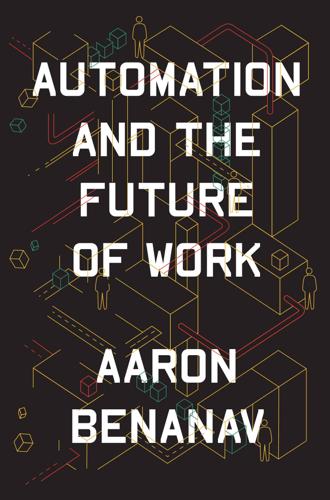
Automation and the Future of Work
by
Aaron Benanav
Published 3 Nov 2020
Yet only about 17 percent of the global labor force works in manufacturing, with an additional 5 percent in mining, transportation, and utilities.33 The vast majority of the world’s underemployed workers therefore end up employed in the heterogeneous service sector, which accounts for between 70 and 80 percent of total employment in high-income countries, and the majority of workers in Iran, Nigeria, Turkey, the Philippines, Mexico, Brazil, and South Africa.34 The postindustrial economy we have inherited, finally on a world scale, is, however, rather unlike the one whose emergence the American sociologist Daniel Bell first predicted in 1973: instead of an economy of researchers, tennis instructors, and Michelin-rated chefs, ours is predominantly one of side-street barbers, domestic servants, fruit-cart vendors, and Walmart shelf stackers.35 The basic pattern of employment growth in services was best described by Princeton economist William Baumol in the 1960s.
…
On the genesis of unemployment as an economic category, see Michael Piore, “Historical Perspectives and the Interpretation of Unemployment,” Journal of Economic Literature, vol. 25, no. 4, 1987. 4 Yang, War on Normal People, p. 80. Laura Tyson, “Labour Markets in the Age of Automation,” Project Syndicate, June 7, 2017. 5 For an account of how different welfare-state regimes adapted to the return of high unemployment, see Gøsta Esping-Andersen, Social Foundations of Postindustrial Economies, Oxford University Press, 1999; Kathleen Thelen, Varieties of Liberalization and the New Politics of Social Solidarity, Cambridge University Press, 2014; and Lucio Baccaro and Chris Howell, Trajectories of Neoliberal Transformation: European Industrial Relations since the 1970s, Cambridge University Press, 2017.
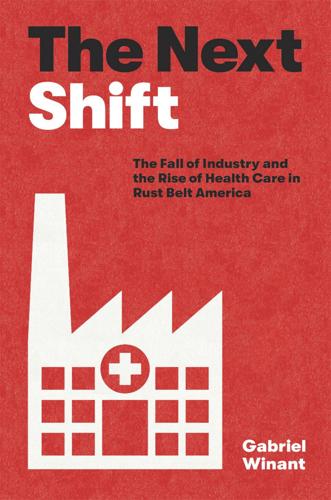
The Next Shift: The Fall of Industry and the Rise of Health Care in Rust Belt America
by
Gabriel Winant
Published 23 Mar 2021
Deindustrialization thus worked its way through Pittsburgh’s social geography unevenly, producing a staged historical transition from secure social citizenship and industrial employment into what came next. These stages were racialized: industrial decline recycled the working class into a new form, starting with Black workers. The process by which people underwent this transition in turn established their position in the postindustrial economy. At the bottoms of the valleys, Black workers generally lost their minimal foothold in social citizenship over the course of the 1960s and were already living in the conditions we would later call neoliberalism and finding new survival strategies, while their white neighbors uphill still inhabited the safety net of the liberal state.
…
World Politics 52, no. 3 (April 2000), 313–349; Francesca Bettio and Janneke Plantenga, “Comparing Care Regimes in Europe,” Feminist Economics, 10, no. 1 (2008), 85–113; Linda McDowell, Working Bodies: Interactive Service Employment and Workplace Identities (London: Wiley-Blackwell, 2009); Andrea Muehlebach, The Moral Neoliberal: Welfare and Citizenship in Italy (Chicago: University of Chicago Press, 2013); Anne Wren, ed., The Political Economy of the Service Transition (Oxford: Oxford University Press, 2013); Sophie Mathieu, “From the Defamilialization to the ‘Demotherization’ of Care Work,” Social Politics 23, no. 4 (Winter 2016), 576–591. 7. Torben Iversen and Anne Wren, “Equality, Employment, and Budgetary Restraint: The Trilemma of the Service Economy,” World Politics 50, no. 4 (July 1998), 507–546; Gøsta Esping-Andersen, Social Foundations of Postindustrial Economies (Oxford: Oxford University Press, 1999), 96. 8. Rachel E. Dwyer, “The Care Economy? Gender, Economic Restructuring, and Job Polarization in the U.S. Labor Market,” American Sociological Review 78, no. 3 (June 2013), 398. On debates over definitions of care and their significance, see Paula England, “Emerging Theories of Care Work,” Annual Review of Sociology 31 (2005), 381–399. 9.
…
For a discussion of this general phenomenon, see Paul Pierson, “Irresistible Forces, Immovable Objects: Post-Industrial Welfare States Confront Permanent Austerity,” Journal of European Public Policy 5, no. 4 (December 1998), 539–560. See also James K. Galbraith, The Predator State: How Conservatives Abandoned the Free Market and Why Liberals Should Too (New York: Free Press, 2008), 105–113. 54. Esping-Andersen, Social Foundations of Postindustrial Economies, 148. For this argument, see Malcolm Harris, Kids These Days: Human Capital and the Making of Millennials (New York: Little, Brown, 2017). 55. Steven Henry Lopez, Reorganizing the Rust Belt: An Inside Study of the American Labor Movement (Berkeley: University of California Press, 2004); Dana Beth Weinberg, Code Green: Money-Driven Hospitals and the Dismantling of Nursing (Ithaca, NY: Cornell University Press, 2009); Andrea Louise Campbell and Kimberly J.
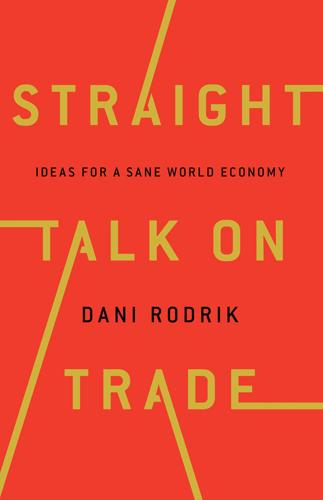
Straight Talk on Trade: Ideas for a Sane World Economy
by
Dani Rodrik
Published 8 Oct 2017
That meant that the same or higher quantity of steel, cars, and electronics could be produced with many fewer workers. Manufacturing’s share of total employment began to decline steadily in all the advanced industrial countries sometime after the Second World War. Workers moved to service industries—education, health, entertainment, and public administration. Thus was born the postindustrial economy. For some, work became more pleasant. For those with the skills, capital, and savvy to prosper in the postindustrial age, services offered inordinate opportunities. Bankers, consultants, and engineers earned much higher wages. Equally important, office work allowed a degree of freedom and personal autonomy that factory work had never provided.
…
On the other hand, for less skilled workers, service sector jobs meant giving up the negotiated benefits of industrial capitalism. The transition to a service economy often went hand in hand with the decline of unions, job protections, and norms of pay equity, greatly weakening workers’ bargaining power and job security. So, the postindustrial economy opened a new chasm between those with good jobs in services, which were stable, high paying, and rewarding, and those with bad jobs, which were fleeting, low paying, and unsatisfying. Two things determined the mix between these two types of jobs and the extent of inequality the postindustrial transition produced.
…
A few places in the non-Western world have gone through a similar evolution. The most notable cases are Japan, South Korea, and Taiwan. Each has experienced significant industrialization, and then deindustrialization. They now share with other advanced countries the feature that they are postindustrial economies where the nature of jobs is determined by the interplay between productivity and labor market practices in service sectors. High productivity combined with labor market protections make for good jobs. Low productivity combined with atomistic labor markets are a recipe for poor jobs. It is tempting to extrapolate this story straightforwardly to countries that have lagged economically.
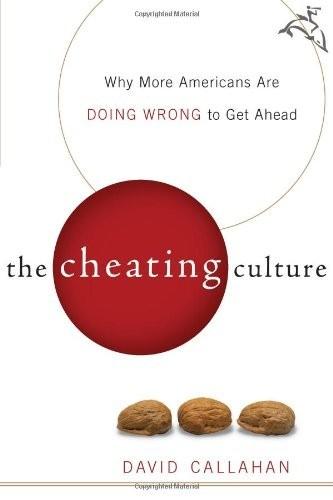
The Cheating Culture: Why More Americans Are Doing Wrong to Get Ahead
by
David Callahan
Published 1 Jan 2004
Free-market ideologues have also successfully pushed tax polices that favor the wealthy and further concentrate wealth at the top of our society.6 Inequality has grown across the industrialized world since the 1970s, but it's more acute here in large part because America has done next to nothing to tackle the problem: There have been no huge new investments in education or job training to ensure that everyone can compete in the postindustrial economy; no consistent government efforts to prime the economic pump to keep labor markets tight and raise wages for those at the bottom; and no major assistance to lower-income families to help them build wealth in the form of homes and retirement savings. Many say that inequality doesn't matter.
…
He writes: "If you believe that things are going to get better—and that you have the capacity to control your life—trusting others isn't so risky. Generalized trusters are happier in their personal lives and believe they are masters of their own fate."37 It's not easy to feel like you can control your life in America's postindustrial economy. In a winner-take-all market plagued by stagnating wages, downsizing, and rising prices for key life necessities like health care and housing, many people have good reasons to be pessimistic and resentful. Polling during the boom periods of both the 1980s and 1990s showed that even as the economy grew by leaps and bounds, many people didn't believe that their own incomes would rise.
…
Smart proposals abound for how to help more people create personal wealth: birth endowments that give every child a nest egg on day one and, through the miracle of compound interest, translate into real assets by adulthood; Individual Development Accounts that leverage government money to encourage poorer Americans to save; special housing programs that offer low-interest loans to first-time homeowners; micro-credit loans that allow more people to start a small business. The ideas are all there. What is needed now are serious investments aimed at creating a true "stakeholder society."4 Fourth, more needs to be done to reduce key insecurities that are part of our postindustrial economy. Americans may never again have the kind of job security that was common forty years ago. The days of strong labor unions and benevolent employers who provide good benefits may never return. More and more workers in the new economy will increasingly operate as free agents and have responsibility for meeting their own pension, health-care, and child-care needs.
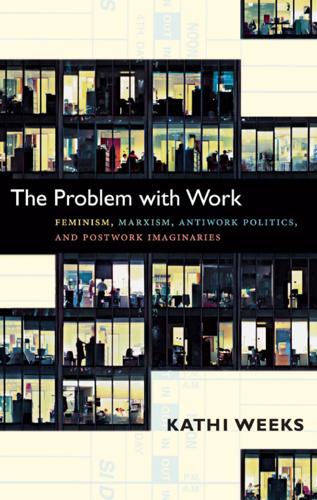
The Problem With Work: Feminism, Marxism, Antiwork Politics, and Postwork Imaginaries
by
Kathi Weeks
Published 8 Sep 2011
This politics of work could be conceived as a way to link the everyday and sometimes every-night experiences of work—its spaces, relations and temporalities; its physical, affective, and cognitive practices; its pains and pleasures—to the political problematic of their present modes and codes of organization and relations of rule.8 Although the category of class remains analytically powerful, I would argue that its political utility is more negligible. The problem is that while the oppositional class category of the industrial period—the “working class”—may accurately describe most people’s relation to waged labor even in a postindustrial economy, it is increasingly less likely to match their self-descriptions. The category of the middle class has absorbed so many of our subjective investments that it is difficult to see how the working class can serve as a viable rallying point in the United States today. A politics of work, on the other hand, takes aim at an activity rather than an identity, and a central component of daily life rather than an outcome.
…
The othering of various immigrant groups delivered a similar reward to wage laborers, paying what W. E. B. Du Bois called a “public and psychological wage” to the white working class (quoted in Roediger 1991, 12). Thus the work ethic traveled down the class ladder in part on the energies of racism, ethnicity, and nationalism. The racialization of the work ethic also played a role in the postindustrial economy by facilitating the acceptance of white-collar work. Indeed, C. Wright Mills notes that, despite the fact that most of such work was routinized and unskilled, white-collar workers in the United States could nonetheless claim greater prestige than blue-collar workers on the basis of the whiteness and citizenship status of those in the white-collar occupational niche (1951, 248).
…
Indeed, the focus on housewives and the claim about the productivity of their work, together with the assertion of the political character of relations in the supposedly private sphere of the family, were at once the product of this Fordist order’s own imaginary and perhaps one of the more trenchant expressions of its refusal: a refusal of the privatization and depoliticization of the personal, a refusal of the naturalization of allegedly nonproductive domestic practices, and a refusal of the gendering of the division between production and reproduction. But in the move from an industrial to a postindustrial economy, from Keynesian to neoliberal regimes of governance, from Taylorist to post-Taylorist labor processes and management strategies, and from a Fordist wage relation predicated on mass production for mass consumption to a more heterogeneous model of the wage relation based on flexibility, the relation between production and reproduction that the wages for housework perspective attempted to map becomes even more complex and the borders between them more difficult to discern.
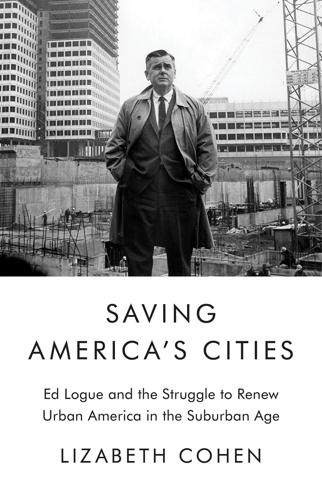
Saving America's Cities: Ed Logue and the Struggle to Renew Urban America in the Suburban Age
by
Lizabeth Cohen
Published 30 Sep 2019
Whether young professionals employed at start-ups and tech firms increasingly locating downtown or formerly suburban empty nesters returning to the city, these new urbanites are willing to pay more and live smaller to be in the city, so long as it is the prospering kind that has successfully transitioned from a declining industrial to a flourishing postindustrial economy. New York, Boston, San Francisco, Atlanta, Chicago, Los Angeles, and their peers are considered attractive; Detroit, Baltimore, Milwaukee, Newark, and Memphis much less so. But now for the bad news. Low-income residents have few prospects in economically declining cities, but their options are also worsening in more dynamic urban areas.
…
“Fresh, healthy arteries,” Rotival told Architectural Forum in 1958, “encourage all kinds of tissue to grow around them,” conveying optimism about the future with the same bodily metaphors that at the time commonly portrayed slums as “diseased” and cities as “dying.”85 From his first 1941 plan, Rotival had proposed positioning New Haven at the crossroads of highways, many of which became realities: a shoreline interstate that would eventually be I-95; the Connector (Route 34) that would transport people from there to a reinvigorated downtown and link the harbor to the Green; a north-south roadway (Route 91) that would tie New Haven to points northward; and a “circumferential route” to move traffic efficiently around the city, which would inspire much discussion but never be built. When the dramatic swirls of blue ink on his plans became new highways, Rotival promised, office buildings and retail stores would follow as the engine rooms for the city’s new postindustrial economy. And classic Corbusian “towers in the park” would replace blighted neighborhoods, housing residents in more modern and sanitary homes surrounded by green space.86 New Haven’s urban renewers unambivalently embraced Rotival’s recommendation to improve road access. In a 1959 article published in Traffic Quarterly Logue asked, “Is it possible for a city, any city, to make its peace with the automobile and to provide an environment where car and man can get along together?”
…
Improving automobile access to downtown New Haven became the linchpin of the strategy. Although retaining and recruiting manufacturers who offered good jobs to New Haven’s large working class were top priorities for the urban renewers, they recognized that they must simultaneously nurture a postindustrial economy. Businesses specializing in communications, television, hospitals, and medical research, they hoped, would eventually put down roots alongside the Connector, with its easy access to downtown, Yale, and the world outside via I-95. For now, their best hope lay with capitalizing on the city’s traditional importance as a market town for the region and reinvigorating its retail appeal.
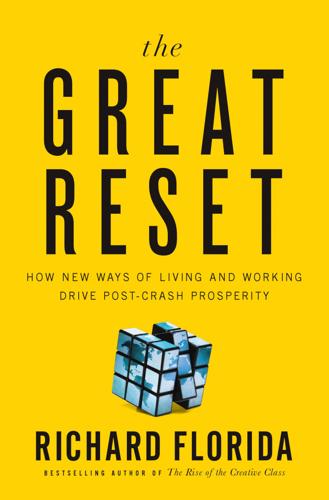
The Great Reset: How the Post-Crash Economy Will Change the Way We Live and Work
by
Richard Florida
Published 22 Apr 2010
Even if cross-border issues hold up a Toronto-Detroit high-speed rail line, a Toronto-Windsor link might very well do the trick: downtown Detroit can be easily connected via subway across the tunnel to Windsor. The blogger and urbanist Ryan Avent sees an important parallel between the revitalization of the Rust Belt and what’s occurred across the Bos-Wash corridor. “Along the northeastern corridor, there are cities that made the jump from industrial to postindustrial economy fairly successfully,” he writes, “namely, those that had developed knowledge-intensive industries like finance or technology even as industry was beginning to leave center cities. In between these successful cities are interspersed others that were heavily reliant on industry, and which didn’t fare nearly as well over the past half century.”
…
The most staggering damage caused by the housing crisis may not be the impact on the financial markets; it may be the long-run competitive disadvantage caused by the inability to relocate the labor force to where the jobs of the future lie. It’s not that home ownership per se is bad, it’s that home ownership on the scale it has grown to is plainly ill suited to today’s postindustrial economy. Letting go of it as the centerpiece of our collective aspirations might be among the healthiest, most liberating steps we can take. We are already beginning to see some signs of a shift toward renting. With all the turmoil in the housing markets, many people have put off buying. And with tightened credit standards (requiring a modest down payment and a reasonable credit rating), it’s become much harder for those who don’t have their financial house in order to buy.
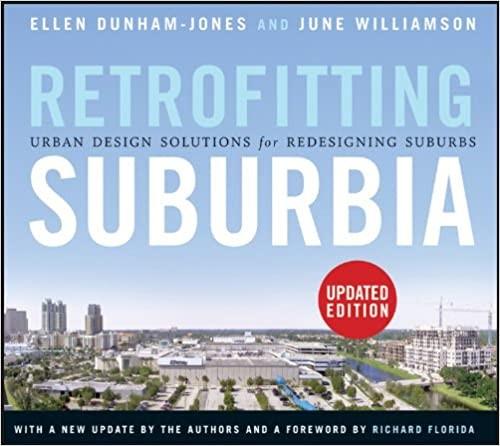
Retrofitting Suburbia, Updated Edition: Urban Design Solutions for Redesigning Suburbs
by
Ellen Dunham-Jones
and
June Williamson
Published 23 Mar 2011
Already by 1975, critics were decrying the uniformity of franchises and chains and the loss of independent retailers as a threat to democracy.15 Today, 90% of space in large malls is leased to chains.16 Passing the early stores from this era on the drive, one sees the country’s early transition from an industrial to a postindustrial economy as more and more of the landscape is devoted to consumerism.17 The visual clutter dies down significantly as the drive passes the enclosed regional malls, corporate campuses, and later edge-city office towers developed in the 1970s and 1980s. Instead of numerous small parcels each with its own direct access and a multitude of signs, the scale of development is now significantly larger.
…
From manufacturing facilities to office parks to distribution warehouses, the forms of suburban workplaces have reflected the larger economy’s shifts from a basis in agriculture to manufacturing to ideas and services. Today, the form of the suburban workplace is changing again. Developers and municipalities are converting outdated suburban office and industrial parks into walkable, mixed-use business districts that reflect both the changing nature of work in today’s postindustrial economy and the habitat preferences of its leading workers, the “creative class.” Instead of physically, functionally, and stylistically separating the place of work from that of the home in strictly defined single-use areas, today’s retrofits are designed to offer the wired, overworked knowledge worker the multitasking convenience of interconnected mixed use as well as its creativity-enhancing spaces for social networking and recreation.
…
RECRUITING THE CREATIVE CLASS The recognition that suburban office parks are no longer as competitive as mixed-use environments for attracting and retaining employees is in keeping with Richard Florida’s theories about the rise of “the creative class.”15 A professor of economic development and public policy at George Mason University, Florida builds on the arguments of Daniel Bell and others about the significance of ideas and innovation in a postindustrial economy. He theorizes that human creativity has replaced raw materials, physical labor, and even flows of capital as the primary generator of economic value. As a result, a new class structure is emerging with profound impacts on communities and the value of places.16 Unlike Bell, he sees its leaders not as technocratic managers, but as highly creative thinkers who fuel innovation, urban development, and American competitiveness.
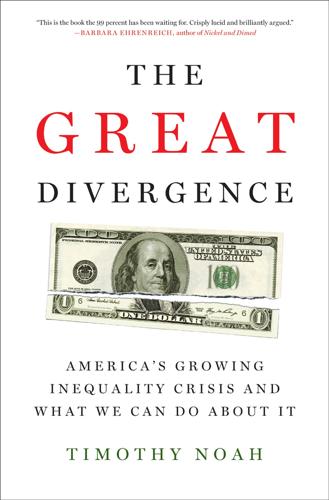
The Great Divergence: America's Growing Inequality Crisis and What We Can Do About It
by
Timothy Noah
Published 23 Apr 2012
The journalist Hanna Rosin, writing in the Atlantic in 2010, observed that three quarters of the jobs lost during the 2007–09 recession had been held by men. “The worst-hit industries,” she wrote, “were overwhelmingly male and deeply identified with macho: construction, manufacturing, high finance.” Picking through this wreckage, Rosin wondered, “What if the modern, postindustrial economy is simply more congenial to women than to men?”13 Source: David Autor, “The Polarization of Job Opportunities in the U.S. Labor Market: Implications for Employment and Earnings” (Washington, Center for American Progress, April 2010), 10. Autor’s source was data from the Census Bureau’s Current Population Survey.
…
Among married couples in the United States, Schwarz calculated, earnings inequality would, from 1967 to 2005, be 25 percent to 30 percent lower were it not for that period’s growing correlation between spouses’ incomes.24 The Rise in Single Parenthood Earlier in this chapter I noted that during the Great Divergence family incomes increased by only 10 percent, even though families during this period were much likelier than they previously were to rely on two salaries, and even though women’s incomes were gaining on men’s. Part of the reason was a rise in single-parent households, which in most instances meant a woman raising children without a husband or male partner. Just as the Atlantic’s Hanna Rosin and The Full Monty’s Gaz wonder whether the modern, postindustrial economy has much use for men, so might we wonder about the modern, postindustrial family. The declining economic value of men as Ward Cleaver–style breadwinners is a significant reason for the rise in single parenthood. As male incomes became less reliable and social taboos were loosened against divorce and out-of-wedlock birth, women became less inclined to marry, or stay married to, the fathers of their children.
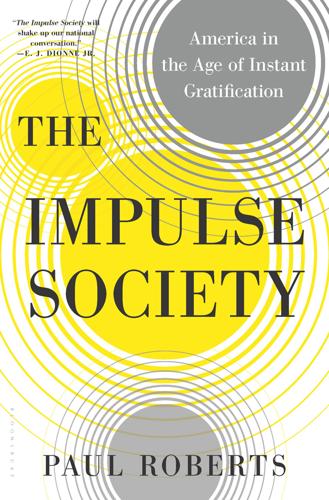
The Impulse Society: America in the Age of Instant Gratification
by
Paul Roberts
Published 1 Sep 2014
But looking at the research, one could also ask whether we’d crossed some sort of neuro-economic threshold where our high-tech consumer economy was supplying more individual “capability” than many of us could comfortably handle. This awkward possibility is part of a broader paradox at the center of the Impulse Society. In the last chapter, we watched as postindustrial economies, juiced up by technology, globalization, a more mercenary business model, and a less engaged government, offered consumers what amounted to a grand bargain: we would surrender much of our postwar economic security, but in return, we would receive some extraordinary new capabilities—manifest in everything from cheaper, faster food and more powerful cars to round-the-clock entertainment and, of course, ubiquitous, easy credit—that would let us continue our search for self-discovery and identity.
…
“Banking is not the creator of our prosperity but the creation of it. It is not the cause of our wealth, but it is the consequence of our wealth.” England could not survive merely as the “hoarder of invested securities” if that capital were not being employed as the “creator of new wealth.”47 More than a century later, the leading postindustrial economies still seem determined not to learn that lesson. Not only has finance remained the dominant sector in the U.S. economy, but the players are more firmly entrenched than ever. The finance sector is even more concentrated today, with just twelve megabanks, including JPMorgan Chase, Bank of America, Citigroup, and Wells Fargo, holding more than two-thirds of all U.S. bank assets.48 Meanwhile, the limbic attributes of the sector continue to shape the culture at large.
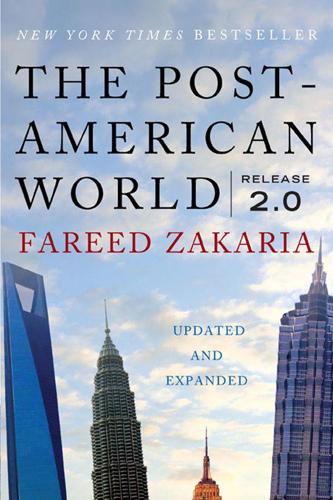
The Post-American World: Release 2.0
by
Fareed Zakaria
Published 1 Jan 2008
The result is a country that looks like no other developing nation. India’s GDP is 50 percent services, 25 percent industry, and 25 percent agriculture. The only other countries that fit this profile are Portugal and Greece—middle-income countries that have passed through the first phases of mass industrialization and are entering the postindustrial economy. India is behind such economies in manufacturing and agriculture but ahead of them in services—a combination that no one could have planned. The role of the consumer in India’s growth has been similarly surprising. Most Asian success stories have been driven by government measures that force the people to save, producing growth through capital accumulation and market-friendly policies.
…
“Tip,” 179, 284 Opium Wars, 81 Organization of American States (OAS), 268 Organization of Petroleum Exporting Countries (OPEC), 30 Orissa, 155 Ottoman Empire, 67, 68, 73, 75, 82, 84, 85, 117–18 outsourcing, 27–28, 50, 148, 203 “Pacific Century,” 245 Pakistan, 12, 13, 14, 145, 159, 165, 166, 172, 176, 241, 260, 263, 264, 271 Palestinians, 6, 246 Pampers diapers, 105 Parsley crisis (2002), 239–41 Patriots Alliance, 135 Patten, Christopher, 248–49 “peaceful rise,” 119–20, 127–36 peasants, 65–66, 100, 106, 112 Pei, Minxin, 106, 110 pensions, 212 Perejil Island, 239–41 Perry, William, 265 Pershing missiles, 251 Persian Gulf, 32 Peru, 26 Peter I, Emperor of Russia, 83–84 petrochemicals, 32 Pew Global Attitudes Survey, 59, 122, 166, 226 Philippines, 11, 28, 133 Philosophical Dictionary (Voltaire), 123 Pilhofer, Aron, 220 Pines, Burton, 235 Pinker, Steven, 9 Pitt, William, 82 Pizarro, Francisco, 80 platinum, 131 Plaza Accord meetings, 282 plutonium, 176 polar ice caps, 33 political parties, 59, 154, 156–62, 178, 179–80, 235, 255, 276–77, 278, 279, 283 “political risk,” 19 Poos, Jacques, 245 population growth, 22, 31, 32–33, 50–51, 66, 80, 100, 112, 144, 145, 148, 178–83, 191, 213–16, 236–37 Portugal, 69, 79, 80, 116, 151 “positive supply shocks,” 20 post-American world: anti-Americanism and, 13, 35, 39, 42, 60, 166, 241, 245, 251–55, 274, 283 asymmetry in, 142–44, 269–72 cultural change in, 1–5, 16, 39, 41, 62–99, 126–27 economic conditions in, 6–61, 93, 94, 97, 197–99, 241–43, 255 future trends for, 1–5, 94–99, 199–203, 204, 239–85 legitimacy in, 243–50, 273–75 multilateralism in, 246–55, 267–69 nationalism in, 34–42, 101, 134–35, 143, 145, 158–59, 180–83, 192, 274 power shift in, 20, 22–23, 29, 34–42, 47–49, 51–54, 93–94, 99, 127–28, 137–44, 241–42, 259, 266–67 “rise of the rest” in, xii, 1–5, 47, 55–56, 65, 96–97, 99, 101, 199, 219–22, 242, 257–59, 263, 267–69, 285 strategic approach to, 142–44, 255–75 unipolar vs. multipolar order of, 1–5, 39, 52–53, 233, 241–42, 243–50, 264–65, 266–69, 274–75 U.S. global role in, xii, 4, 48–61, 117, 120, 142–44, 182–83, 223–26, 235–85 see also globalization postindustrial economies, 151, 200, 204 poverty, 3, 22, 65–66, 100, 102, 106, 111, 113–14, 117, 121, 146, 149, 150, 155–58, 169, 177 Powell, Colin, 240 Pratt School of Engineering, 205 Premji, Azim, 155 price levels, 21, 30, 67, 70, 128 private property, 73, 150 private sector, 148–53, 160–61 privatization, 107, 110, 150–51, 152, 153, 222 Procter & Gamble, 105, 151 product development, 202–3 productivity, 21, 30, 33, 50, 71–72, 160, 200, 212, 281, 282, 283 profit, 72, 80, 128, 200, 203 Protestantism, 81, 97–98, 125, 262 Prussia, 191 Pudong financial district, 102–3 Punjab, 180 purchasing power parity (PPP), 18n, 21, 66n, 113n, 148n, 198n qi (energy), 126 Qienlong, Emperor of China, 69 Qing dynasty, 63–64, 81 quotas, 109 Raffles, Stamford, 185 Rajasthan, 180 Ramo, Joshua Cooper, 142–43 Ranbaxy, 153 Ratner, Ely, 38 Rattner, Steven, 230 Reagan, Ronald, 168, 251, 284 real estate, 43, 85, 152, 217, 218, 225 recessions, 25, 227, 232 regional governments, 145, 161, 178–83 regional powers, 257–63 Reisen, Helmut, 281 Reliance Industries, 149, 153 religion, 15–16, 74, 76, 80, 81, 87, 98, 122–25, 127, 169, 171, 172, 213, 262, 278 Renaissance, 68 Report of Phihihu (Frederick II), 124 Republican Party, 59, 235, 276–77, 278, 280–81 reserve currency, 267 “responsible stakeholders,” 257 retail sector, 203 Revolutionary War, U.S., 194 Rhine River, 77 Ricci, Matteo, 124–25 Rice, Condoleezza, 252–53 Richie, Donald, 92 Rig Veda, 171 Rise of the Great Nations, The, 120 Rivoli, Pietra, 203 Roach, Steven, 282 Roberts, J.

Microserfs
by
Douglas Coupland
Published 14 Feb 1995
It's as if there is a collective decision to disfavor a Godhead. It's not despair; they just want the Real Thing. The Beast. And the penny pinching! The nondisclosure forms! The extreme wealth of the high-IQ'ed genetic gift baskets who won on the Punnet Square of life! I suppose this is the birthplace of the new, postindustrial economy here amid the ghosts of apricot orchards, spinach farms, and horse ranches - here inside the science parks, industrial areas, and cool, leafy suburbs. Here, where sexy new technologies are being blueprinted, CAD'ed, engineered, imagineered, and modeled - post-machines making countless millions of people obsolete overnight.
…
You will be able to see the pyramid of the Luxor Hotel . . . " The 737 lurched sideways as its human cargo chugged like Muppets to view a Sim City game gone horribly wrong: the Luxor Hotel's obsidian black glassy pyramid, and beside it, the Excalibur's antiseptic, Lego-pure, obscenely off-scale Arthurian fantasy. Farther up the Strip was the MGM's jade glass box with 3,500 slot machines and 150 gaming tables representing the largest single concentration of cash points on earth - "the Detroit of the postindustrial economy," Michael declared. It was pleasing for me to see so many of the faces of the people in my life, lit by the glow of the cabin windows - Karla, Dad, Susan, Emmett, Michael, Amy, Todd, Abe, Bug, and Bug's friend, Sig - their faces almost fetally blank and uncomprehending at the newness of the world below into which we would shortly dip.
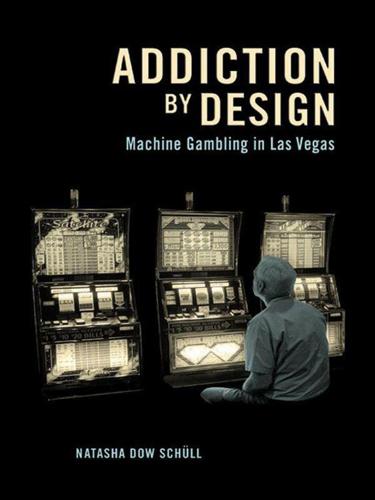
Addiction by Design: Machine Gambling in Las Vegas
by
Natasha Dow Schüll
Published 15 Jan 2012
In the early 1980s, cultural critic Neil Postman said that one had only to look to Las Vegas to understand America.16 In the mid-1990s, casino tycoon Steve Wynn turned this pronouncement around, remarking that “Las Vegas exists because it is a perfect reflection of America.”17 Since then, journalists and academics alike have debated whether the rest of the country is becoming more like Las Vegas, or if, alternatively, Las Vegas is becoming more like the rest of the country. Some have called the city “the new Detroit” to signal its status as capital of the postindustrial economy, while others have pointed out that Detroit itself is now home to the popular MotorCity Casino.18 Running alongside the debate over whether Las Vegas is a mirror or a model for America is the question of whether to view the city as a shape-shifting marvel of human inventiveness and technological sophistication or as a dystopic instantiation of consumer capitalism.19 Whatever its relationship to the culture at large, it is clear that Las Vegas “has become a vast laboratory,” as urban historians Hal Rothman and Mike Davis wrote in 2002, “where giant corporations, themselves changing amalgams of capital from different sectors, are experimenting with every possible combination of entertainment, gaming, mass media, and leisure.”20 In the Las Vegas laboratory, machine gambling figures both as a means and an end of experimentation.
…
Machine gamblers like Lola frequently connect their preference for the asocial, robotic procedure of machine play to the hypersociality demanded by their jobs—in real estate, accounting, insurance, sales, and other service fields. In the 1970s, the sociologist Daniel Bell characterized the postindustrial economy as one driven by the provision of services rather than factory labor, exchanges between people rather than between people and machinery.15 Extending Bell’s insights, Arlie Hochschild argued in the 1980s that the shift from assembly-line production to service provision had been accompanied by a shift from physical labor to “emotional labor” in which “the emotional style of offering the service is part of the service itself.”16 While physical machine labor carries the risk of alienation from one’s body, emotional labor carries the risk of becoming estranged from one’s feelings and affects as they are processed and managed in the marketplace of social relations.
…
After 5 p.m., O’Hare would park herself in front of a video poker machine, medicating herself with the rhythms of choosing and discarding poker hands.”17 “At the machines,” Josie elaborates, “I was safe and away. Nobody talked to me, nobody asked me any questions, nobody wanted any bigger decision than if I wanted to keep the king or the ace.” It makes a twisted kind of sense that in Las Vegas, a city that the urban historian Mike Davis has called the “Detroit of the postindustrial economy,” machines are less likely to serve as a means of production from which users become alienated and more likely to serve as a means of relief from the alienation of social labor.18 Patsy recalls her work as a welfare officer at the State of Nevada’s food stamp office: “All day long I’d hear sad stories of no food, unwanted pregnancy, violence.
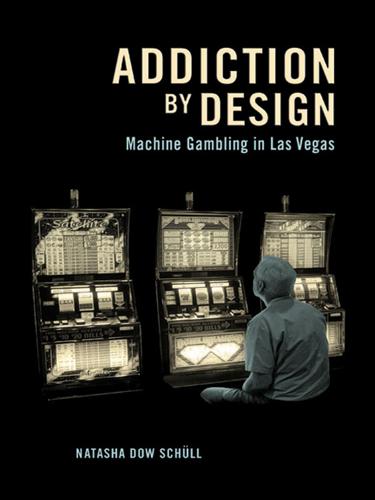
Addiction by Design: Machine Gambling in Las Vegas
by
Natasha Dow Schüll
Published 19 Aug 2012
In the early 1980s, cultural critic Neil Postman said that one had only to look to Las Vegas to understand America.16 In the mid-1990s, casino tycoon Steve Wynn turned this pronouncement around, remarking that “Las Vegas exists because it is a perfect reflection of America.”17 Since then, journalists and academics alike have debated whether the rest of the country is becoming more like Las Vegas, or if, alternatively, Las Vegas is becoming more like the rest of the country. Some have called the city “the new Detroit” to signal its status as capital of the postindustrial economy, while others have pointed out that Detroit itself is now home to the popular MotorCity Casino.18 Running alongside the debate over whether Las Vegas is a mirror or a model for America is the question of whether to view the city as a shape-shifting marvel of human inventiveness and technological sophistication or as a dystopic instantiation of consumer capitalism.19 Whatever its relationship to the culture at large, it is clear that Las Vegas “has become a vast laboratory,” as urban historians Hal Rothman and Mike Davis wrote in 2002, “where giant corporations, themselves changing amalgams of capital from different sectors, are experimenting with every possible combination of entertainment, gaming, mass media, and leisure.”20 In the Las Vegas laboratory, machine gambling figures both as a means and an end of experimentation.
…
Machine gamblers like Lola frequently connect their preference for the asocial, robotic procedure of machine play to the hypersociality demanded by their jobs—in real estate, accounting, insurance, sales, and other service fields. In the 1970s, the sociologist Daniel Bell characterized the postindustrial economy as one driven by the provision of services rather than factory labor, exchanges between people rather than between people and machinery.15 Extending Bell’s insights, Arlie Hochschild argued in the 1980s that the shift from assembly-line production to service provision had been accompanied by a shift from physical labor to “emotional labor” in which “the emotional style of offering the service is part of the service itself.”16 While physical machine labor carries the risk of alienation from one’s body, emotional labor carries the risk of becoming estranged from one’s feelings and affects as they are processed and managed in the marketplace of social relations.
…
After 5 p.m., O’Hare would park herself in front of a video poker machine, medicating herself with the rhythms of choosing and discarding poker hands.”17 “At the machines,” Josie elaborates, “I was safe and away. Nobody talked to me, nobody asked me any questions, nobody wanted any bigger decision than if I wanted to keep the king or the ace.” It makes a twisted kind of sense that in Las Vegas, a city that the urban historian Mike Davis has called the “Detroit of the postindustrial economy,” machines are less likely to serve as a means of production from which users become alienated and more likely to serve as a means of relief from the alienation of social labor.18 Patsy recalls her work as a welfare officer at the State of Nevada’s food stamp office: “All day long I’d hear sad stories of no food, unwanted pregnancy, violence.
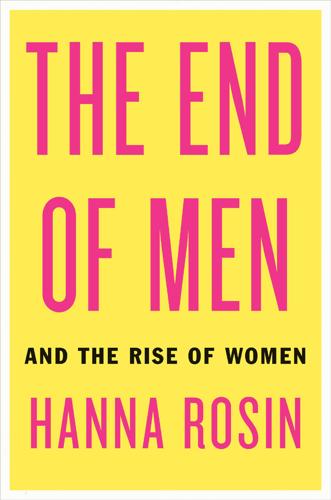
The End of Men: And the Rise of Women
by
Hanna Rosin
Published 31 Aug 2012
Our vast and struggling middle class, where the disparities between men and women are the greatest, is slowly turning into a matriarchy, with men increasingly absent from the workforce and from home, and women making all the decisions. In the past, men derived their advantage largely from size and strength, but the postindustrial economy is indifferent to brawn. A service and information economy rewards precisely the opposite qualities—the ones that can’t be easily replaced by a machine. These attributes—social intelligence, open communication, the ability to sit still and focus—are, at a minimum, not predominantly the province of men.
…
African-American men and women have the greatest gender gap in college graduation rates, and Ebony magazine often laments how difficult it is for a black woman to find a suitable man. In 2010 I visited Kansas City to follow one of the court-sponsored men’s support groups that have sprung up throughout the Rust Belt and in other places where the postindustrial economy has turned traditional family roles upside down. Some groups help men cope with unemployment, and others help them reconnect with their alienated families. Many of the men I spoke with had worked as electricians or builders; one had been a successful real-estate agent. Now those jobs are gone, too.
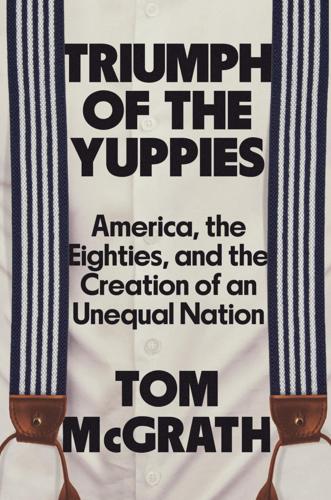
Triumph of the Yuppies: America, the Eighties, and the Creation of an Unequal Nation
by
Tom McGrath
Published 3 Jun 2024
And the best place for an ambitious young professional, female or male, to make their mark in this new world? It was in a large city, for the simple reason that cities were where the best jobs were. America’s industrial heartland—places like Youngstown—might be struggling mightily in the deepening recession, but the “ideas industry”—the postindustrial economy—was now becoming a reality, and cities were where the best opportunities lay. New York, for example, which in the early ’70s had lost nearly six hundred thousand manufacturing jobs, was in the midst of what one observer called the biggest economic shift since the Industrial Revolution, with more than half of its economic output now being generated not by blue-collar workers who manufactured products, but by white-collar workers who processed ideas and information in fields like finance, law, media, marketing, and technology.
…
“It’s the archetypal post-industrial city,” the Los Angeles Times wrote of the changes taking place in San Francisco in the first half of the 1980s, “one with an economy based not on steel plants or breweries, but on silicon chips, corporate headquarters, international trade, banking, law. And its residents represent that.” The rise of the postindustrial economy was only intensifying the gentrification of certain neighborhoods within cities. In New York, changes were obvious not only on the Upper West Side, but in SoHo, the Seaport, Chelsea, Tribeca, and Hell’s Kitchen, as well as across the Hudson River in Hoboken and Jersey City. In Boston, neighborhoods like Back Bay, the South End, and Charlestown were being taken over by young professional couples whose dual incomes allowed them to afford the fast-rising real estate prices.
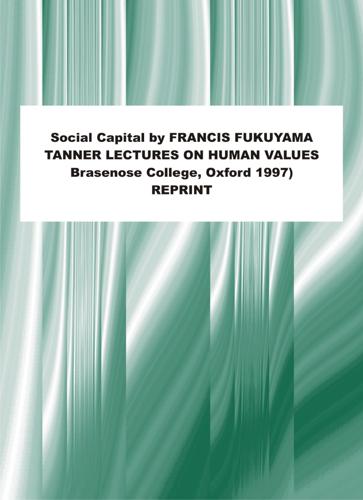
Social Capital and Civil Society
by
Francis Fukuyama
Published 1 Mar 2000
Thomas argue that the development of formal property rights in England and Holland in the sixteenth century was critical to the creation of modern capitalism and the informal norms supporting it.10 Conversely, Diego Gambetta argues that the absence of state-enforced property rights is the source of the pervasive culture of distrust in Sicily.11 Outside of the family, education is the next most important arena for socialization. Education produces a blizzard of different norms: it can lead to the spread of new ideologies or systematic ideas, but for the most part produces norms on a smaller scale. One of the most important sources of norms in a postindustrial economy is professional education, where engineers, doctors, lawyers, accountants, or architects not only are trained in their particular field of specialty, but are also socialized to obey certain behavioral norms concerning professional standards. 10 Douglass C. North and Robert P. Thomas, The Rise o f the Western W o r l d : A N e w Economic History (Cambridge: Cambridge University Press, 1973). 11 Diego Gambetta, The Sicilian Mafia: T h e Business of Private Protection (Cambridge: Harvard University Press, 1993). 464 Tanner Lectures on Human Values One specific use of law that plays a particularly important role in the shaping of social norms is public education.

The Inevitable: Understanding the 12 Technological Forces That Will Shape Our Future
by
Kevin Kelly
Published 6 Jun 2016
It led a greater percentage of the population to decide that humans were meant to be ballerinas, full-time musicians, mathematicians, athletes, fashion designers, yoga masters, fan-fiction authors, and folks with one-of-a-kind titles on their business cards. With the help of our machines, we could take up these roles—but, of course, over time the machines will do these as well. We’ll then be empowered to dream up yet more answers to the question “What should we do?” It will be many generations before a robot can answer that. This postindustrial economy will keep expanding because each person’s task (in part) will be to invent new things to do that will later become repetitive jobs for the robots. In the coming years robot-driven cars and trucks will become ubiquitous; this automation will spawn the new human occupation for former truck drivers of trip optimizer, a person who tweaks the traffic algorithms for optimal energy and time usage.
…
See also work environments on-demand expectations, 64–65, 114–17 OpenOffice, 151 open source industry, 135, 141–42, 143, 271 oral communication, 204 Oscar Awards, 187–88 overfitting, 170 ownership, 112–13, 117–18, 121–22, 124–25, 127, 138 Page, Larry, 36–37 Pandora, 169 parallel computation, 38–39, 40 passive archives, 249 passwords, 220, 235 patents, 283 PatientsLikeMe, 145 patronage, 71–72 PayPal, 65, 119–20, 124 pedometers, 238 peer-to-peer networks, 129–30, 184–85 Periscope, 76 “personal analytics” engine, 239 personalization, 68–69, 172–73, 175, 191, 240–41, 261–62 pharmaceutical research, 241–42 pharmacies, 50 phase transitions, 294–97 phones automatic updates of, 62 cameras in, 34 and clouds, 126 and decentralized communications, 129–31 and on-demand model of access, 114 directories, 285 and interactivity, 219 lifespan of apps for, 11 as reading devices, 91–92 in rural China, 56 and self-tracking technology, 239–40 and tracking technology, 239–40, 250, 253 and virtual reality technology, 215, 222 photography and images and artificial intelligence, 33–34 and classic film production, 198–99 and content recognition, 43, 203 and Creative Commons licensing, 139 democratization of, 77 and digital storage capacity, 266 and facial recognition, 39, 43 flexible images, 204 and Google Photo, 43 and lifelogging, 248–49 and new media genres, 195 and photo captioning, 51 and reproductive imperative, 87 sharing of, 140 Picard, Rosalind, 220 Picasso, Pablo, 288 Pichai, Sundar, 37 Pine, Joseph, 172–73 Pinterest, 32, 136, 139, 140, 183 piracy, 124 placebo effect, 242 platform synergy, 122–25, 131 PlayStation Now, 109 porn sites, 202–3 postal mail, 253 postindustrial economy, 57 “presence,” 216–17 printing, 85, 87. See also books privacy, 124, 253, 255 processing speeds, 293 Progressive Insurance, 251 Project Jacquard, 225 Project Sansa, 218 property rights, 207–8 prosumers (freelancers), 113, 115, 116–17, 148, 149 proxy data gathering, 255 public commons, 121–22 public key encryption, 260–61 publishing and publishers, 149 purchase histories, 169 Quantified Self Meetup groups, 238–40 Quantimetric Self Sensing, 247 quantum computing, 284 Quid, 32 Quinn, David, 17 Radiohead, 72 randomized double-blind trials, 242 reading, 89, 91–92, 94–95, 103–4.
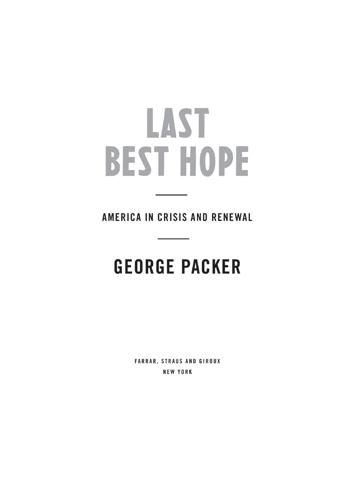
Last Best Hope: America in Crisis and Renewal
by
George Packer
Published 14 Jun 2021
Another is to direct large-scale government investments into key national sectors—clean energy, manufacturing, education, and caregiving—to create jobs, stimulate innovation, and raise the pay and status of workers. And a third is to form new institutions for worker power that are better suited to a postindustrial economy, as Michael Lind argues in The New Class War: labor representation on corporate boards, collective bargaining by sector rather than company, and wage boards that set minimum terms for low-wage industries like fast food. The oppression of the American working class is a largely untapped subject for this generation of activists.

The New Snobbery
by
David Skelton
Published 28 Jun 2021
As we’ve already noted, the proportion of university-educated MPs has also dramatically increased in recent years, just as the proportion of manual workers who become MPs has fallen from around a fifth in 1979 to less than 3 per cent now. The values that MPs bring will much more likely be those of the minority of the country who attended university than the majority of the population who didn’t. Just as economists tell us that we are in a ‘postindustrial’ economy (Germany and Korea wisely ignored the memo), it seems that we have partially retreated to a pre-industrial model of politics, with the Commons representing the different concerns of the educated middle class. Industrialisation led to the formation of the Labour Party for those frustrated at the Liberal failure to elect working-class MPs and ‘reflect working-class concerns’, and for those dedicated to ‘a distinct Labour group … engaged in promoting legislation in the direct interests of labour’.25 As previously discussed, this led to decades of increased working-class representation in the Commons.† Post-industrialisation has, however, meant that the part of the population which don’t have degrees and don’t work in professional jobs are again badly unrepresented.
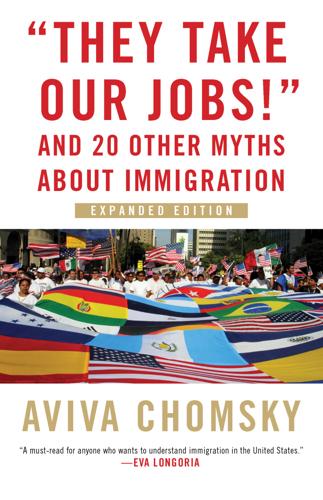
"They Take Our Jobs!": And 20 Other Myths About Immigration
by
Aviva Chomsky
Published 23 Apr 2018
One way of doing this is by moving workers, and moving production, around the globe. In the early days of the industrial revolution, factories brought workers to the point of production. Some came from local rural areas to the new industrial cities, while in the United States some came from halfway across the globe. In today’s economy—sometimes called the “postindustrial” economy—it’s been industries as well as workers that have relocated. The global economic restructuring since World War II has created what some have called a “new international division of labor.”1 Low-paid workers in the Global South used to produce and export raw materials, which fueled the industrial revolution in the north.
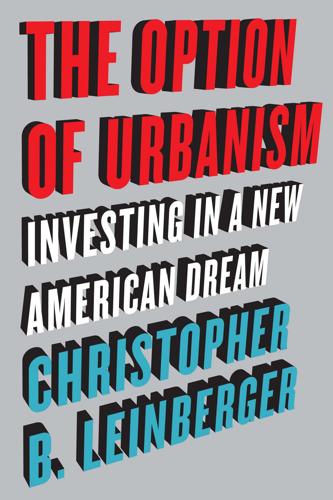
The Option of Urbanism: Investing in a New American Dream
by
Christopher B. Leinberger
Published 15 Nov 2008
The boredom of having only the option of drivable sub-urban life, including the unintended consequences of ever longer and more congested commutes and the running of nearly every errand in a car, is not to be underestimated. T H E M A R K E T R E D I S C OV E R S WA L K A B L E U R B A N I S M | 9 1 Alongside these demographic changes, the economy has made a fundamental change. The new economy has been called many things: the virtual economy, the service economy, the postindustrial economy, the knowledge economy, and the creative economy. This has come to mean a focus on the up front, creative portion of a product or service development and the back-end marketing and distribution of that product or service. The actual production may be outsourced abroad, or it may be accomplished with fewer employees in this country due to advances in technology, which lead to increased productivity.
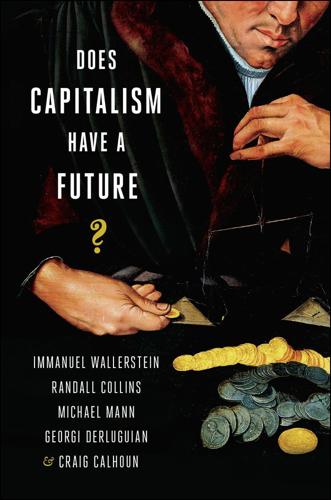
Does Capitalism Have a Future?
by
Immanuel Wallerstein
,
Randall Collins
,
Michael Mann
,
Georgi Derluguian
,
Craig Calhoun
,
Stephen Hoye
and
Audible Studios
Published 15 Nov 2013
Capitalists will try nonetheless to reduce wages but they will now be dealing with a globally organized working class. It will resist, producing a global crisis of capitalism. This scenario will take a while yet. Only a part of the enormous populations of India and China have as yet been absorbed into a minimally regulated industrial or postindustrial economy. That will take more than thirty years. Moreover, the process hasn’t yet begun in Africa or central Asia so that such a fill-up may take up until the end of the 21st century, especially since population growth is projected to continue until near the end of the century and it will be biggest in the poorest countries.
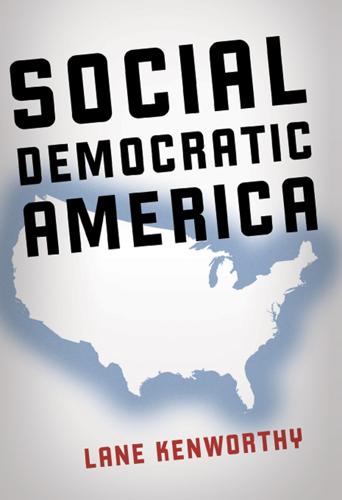
Social Democratic America
by
Lane Kenworthy
Published 3 Jan 2014
Ermisch, John, Markus Jäntti, and Timothy Smeeding, eds. 2012. From Parents to Children: The Intergenerational Transmission of Advantage. New York: Russell Sage Foundation. Esping-Andersen, Gøsta. 1990. The Three Worlds of Welfare Capitalism. Princeton, NJ: Princeton University Press. ———. 1999. Social Foundations of Postindustrial Economies. Oxford: Oxford University Press. ———. 2003. “Why No Socialism Anywhere? A Reply to Alex Hicks and Lane Kenworthy.” Socio-Economic Review 1: 63–70. ———. 2004. “Unequal Opportunities and the Mechanisms of Social Inheritance.” Pp. 289–314 in Generational Income Mobility in North America and Europe.
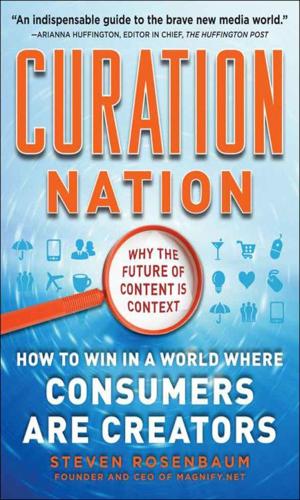
Curation Nation
by
Rosenbaum, Steven
Published 27 Jan 2011
And most people can’t do most things, so you need to examine systems and professional organizations, and gatekeepers, and all the other infrastructure that is necessary for meritocracy to operate. For people who fly planes or people who are heart surgeons, or journalists, or film directors, in a professionalized, industrial—particularly a postindustrial—economy, there is a need for some sort of collective agreement on what determines expertise.” The irony of Keen’s rant is that while we all agree that airline pilots should have training and expertise and licenses, it’s hard to see how those same concerns or agreed standards should be held up by journalists or film directors.
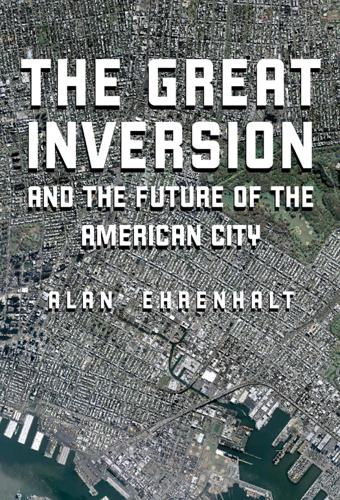
The Great Inversion and the Future of the American City
by
Alan Ehrenhalt
Published 23 Apr 2012
These recently fading parts of town acquire a cachet, as Sheffield did in Chicago in the 1980s, and the poorer people who formerly lived in these communities move farther out to obtain cheaper housing. Demographic inversion has taken place. It’s not impossible to imagine this happening in Cleveland and Cleveland Heights. But it requires jobs—new ones in the postindustrial economy in numbers sufficient to replace the old ones in manufacturing. Cleveland has not been able to produce these jobs. In fact, the whole area has been losing them at an alarming pace. As the economist George Zeller reported from census data in mid-2010, in the years since 2000, Cleveland and surrounding Cuyahoga County had lost more than 130,000 jobs.

The Socialist Manifesto: The Case for Radical Politics in an Era of Extreme Inequality
by
Bhaskar Sunkara
Published 1 Feb 2019
In the United States, hourly wages have grown by a paltry 0.2 percent since 1979. Things are actually worse in the United Kingdom, where wages fell by about 10 percent between 2007 and 2014, even as economic productivity grew by about the same amount. And in both countries, as in other “postindustrial” economies across Europe, increased flexibility for employers has meant increased uncertainty for workers. In the United Kingdom, about 9 percent of part-time workers reported being unable to find a full-time job in 2008, and that percentage more than doubled by 2013. The “involuntary part-timer” or “1099-er”—unseen in the postwar era—is now a feature of our economic landscape.2 You might think that a socialist movement would be inevitable in times like these.

How to Fix the Future: Staying Human in the Digital Age
by
Andrew Keen
Published 1 Mar 2018
Second, there is the distinctively unexceptional nature of the Estonian economy. Ilves, you’ll remember, told me that Estonia was a “very poor” country when, in August 1991, the Soviets left. But even today it remains a relatively underdeveloped place, especially in comparison with advanced postindustrial economies like the United States, Germany, or Singapore. Estonia might top the trust league, but it doesn’t lead the world in much else. A tech mega-billionaire, a Zuckerberg or a Bezos, could probably buy little Estonia outright if he wanted. Its per capita GDP of around $17,600, for example, is ranked forty-second in the world (slightly above middle-rank economies like Russia and Turkey but a third of Singapore’s $52,900), and the average monthly wage, after taxes, of its workforce of 675,000 is under a thousand euros.

The Rise of the Network Society
by
Manuel Castells
Published 31 Aug 1996
. —— and ––— (1995b) Networks of Companies in Asia, Berkeley, CA: University of California, BRIE research paper. —— and Guerrieri, Paolo (1995) “The variable geometry of Asian trade”, in Eileen M. Doherty (ed.), Japanese Investment in Asia, Berkeley, CA: University of California, BRIE–Asia Foundation, pp. 189–208. —— and Zysman, John (1987) Manufacturing Matters: the Myth of Postindustrial Economy, New York: Basic Books. —— et al. (1985) Global Competition: the New Reality, vol. III of John Young (chair), Competitiveness: the Report of the President’s Commission on Industrial Competitiveness, Washington, DC: Government Printing Office, p. 1. Cohendet, P. and Llerena, P. (1989) Flexibilité, information et décision, Paris: Economica.
…
. —— (1997) “From partial to systemic globalization: international production networks in the electronic industry”, Berkeley: University of California, BRIE working paper. —— and O’Connor, David (1992) Competing in the Electronics Industry: the Experience of Newly Industrializing Economies, Paris: OECD. Esping-Andersen, G. (ed.) (1993) Changing Classes, London: Sage. —— (1999) Social Foundations of Postindustrial Economies, Oxford: Oxford University Press. Estefania, Joaquin (1996) La nueva economia: La globalizacion, Madrid: Editorial Debate. Evans, Peter (1995) Embedded Autonomy: States and Industrial Transformation, Princeton, NJ: Princeton University Press. Fager, Gregory (1994) “Financial flows to the major emerging markets in Asia”, Business Economics, 29(2): 21–7.
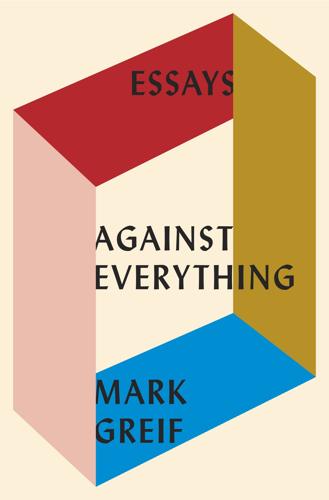
Against Everything: Essays
by
Mark Greif
Published 5 Sep 2016
In Mogadishu; at Mazar-i-Sharif or Tora Bora; in Nasiriyah, Najaf, Baghdad, and now Fallujah, we’ve seen what had been hidden since Vietnam—the way the US military currently trains and arms its best soldiers to fight on the ground, especially in urban or unconventional surroundings. Human bodies still do the face-to-face work of killing for the United States, just as in so many spheres of the postindustrial economy small populations are still needed to do the skilled or filthy work that machines cannot reach. The military becomes reliant on a small number of frontline fighters, heavily equipped with technology, who are rewarded with a special kind of status. And unfamiliar trappings do surround them.

The Uninhabitable Earth: Life After Warming
by
David Wallace-Wells
Published 19 Feb 2019
It may not much longer be merely a rhetorical question, if the Paris accords yield to a more rigorous global carbon governance structure, as they were intended to, and add, along the way, a proper enforcement mechanism, military or otherwise. How and how fast China manages its own transition from industrial to postindustrial economy, how and how fast it “greens” the industry that remains, how and how fast it remodels agricultural practices and diet, how and how fast it steers the consumer preferences of its booming middle and upper classes away from carbon intensity—these are not the only things that will determine the climate shape of the twenty-first century.

The Coming of Neo-Feudalism: A Warning to the Global Middle Class
by
Joel Kotkin
Published 11 May 2020
Of course it will look different this time around: we wont see knights in shining armor, or vassals doing homage to their lords, or a powerful Catholic Church enforcing the reigning orthodoxy. What we are seeing is a new form of aristocracy developing in the United States and beyond, as wealth in our postindustrial economy tends to be ever more concentrated in fewer hands. Societies are becoming more stratified, with decreasing chances of upward mobility for most of the population. A class of thought leaders and opinion makers, which I call the “clerisy,” provide intellectual support for the emerging hierarchy.
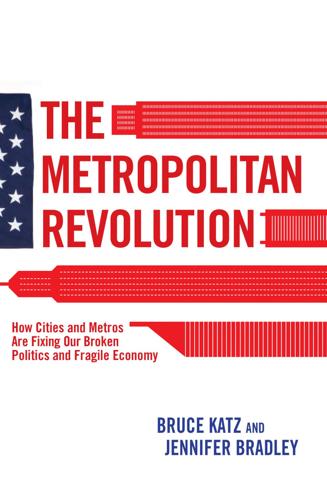
The Metropolitan Revolution: How Cities and Metros Are Fixing Our Broken Politics and Fragile Economy
by
Bruce Katz
and
Jennifer Bradley
Published 10 Jun 2013
When federal, state, and local agendas are in alignment, and distinct roles are clarified, the opportunities for success are dramatically increased.”30 TRADING ASSETS HIDDEN IN PLAIN SIGHT What American leaders have going for them are communities with rich, mostly hidden assets, ready to be leveraged and exploited for global purposes. In a country that watches Black Friday retail statistics like baseball scores and is convinced that it has a postindustrial economy that produces little, the real productive and innovative economy has surprising strengths. Those strengths, captured in earlier chapters, start with the tremendous innovative capacity in the United States, concentrated in metropolitan areas because of the special mix of firms, workers, and institutions that foster innovation.
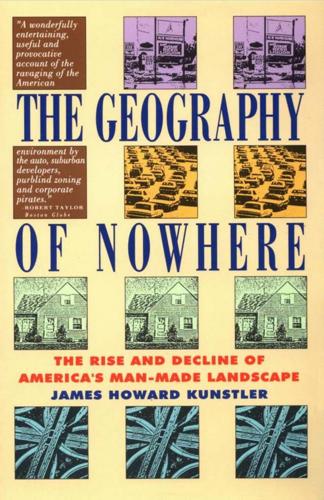
The Geography of Nowhere: The Rise and Decline of America's Man-Made Landscape
by
James Howard Kunstler
Published 31 May 1993
Unemployment climbed, especially in the building trades, and because of the gross overbuilding of the eighties, the government could not artificially stimulate more new construction with the same old tricks. Car sales plummeted-and anyway, half of American drivers owned foreign cars by now. In fact, most of the things that Americans bought, period, were manufactured elsewhere. The nation had entered what was being referred to as a postindustrial economy, but so far it was unclear exactly what that meant-perhaps people selling hamburgers and movie tickets at the mall to employees of other malls on their days off. This was a patent absurdity, of course, but without industries of some kind in America, the prospects for maintaining the consumer economy at the accustomed level seemed rather dim.

Green Tyranny: Exposing the Totalitarian Roots of the Climate Industrial Complex
by
Rupert Darwall
Published 2 Oct 2017
In contrast the new economic order focuses more on the notion of “sustainability”—so reflective of the feudal worldview—over rapid economic expansion.5 In California, it is being replaced by a new, deeply stratified social order. As Kotkin puts it, the oligarchs of a dematerialized economy who made billions out of information technology (IT), finance, and entertainment have shaped a new kind of postindustrial economy. Its lighter environmental footprint becomes a license to deny those less well adapted or unfortunate a share in its riches and its lifestyle. Antipollution regulation accelerated California’s deindustrialization. Aerospace manufacturing shifted to states with lower energy costs and right-to-work laws.
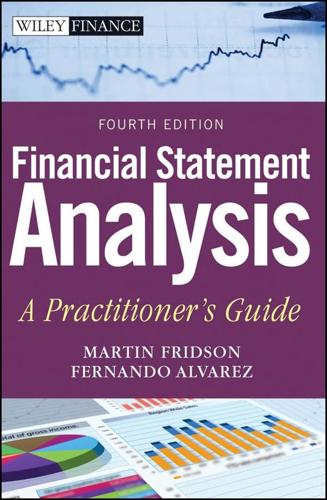
Financial Statement Analysis: A Practitioner's Guide
by
Martin S. Fridson
and
Fernando Alvarez
Published 31 May 2011
Branded food and consumer goods producers are not the only ones with value based largely on intellectual capital. Like those companies’ expenditures aimed at building the economic value of their brands, the research and development outlays of technology and pharmaceutical companies are written off as incurred and consequently are assigned no asset value under GAAP. For these exemplars of the postindustrial economy, return on equity looks less stratospheric when equity is viewed in terms of market capitalization rather than historical cost (see “Pros and Cons of a Market-Based Equity Figure” in Chapter 2). VALUATION THROUGH RESTRUCTURING POTENTIAL A subtler benefit of the Du Pont analysis is the insight it can provide into companies’ potential for enhancing value through corporate restructuring.
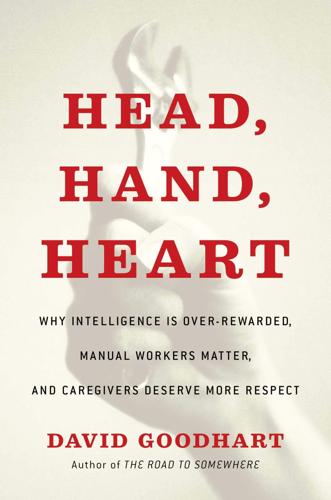
Head, Hand, Heart: Why Intelligence Is Over-Rewarded, Manual Workers Matter, and Caregivers Deserve More Respect
by
David Goodhart
Published 7 Sep 2020
PART FOUR THE FUTURE Chapter Nine The Fall of the Knowledge Worker The urban, educated people who voted against populism will have a whole new attitude when globalization and automation get up close and personal. Richard Baldwin There are two fundamental reasons why cognitive ability has become so central to status and reward in modern societies. First, the industrial and then postindustrial economy and society has simply demanded more highly qualified professional people with above-average levels of cognitive ability. Second, appointing, promoting, and rewarding people according to their cognitive ability seems fair. This fairness, it is true, is qualified by the fact that cognitive ability is partly inherited and the IQ tests and exams we use to measure it may not be fully measuring what we want them to measure, as discussed in Chapter Three.
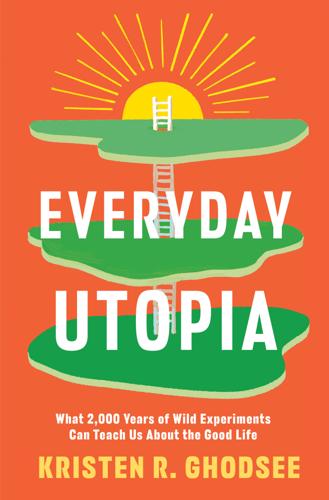
Everyday Utopia: What 2,000 Years of Wild Experiments Can Teach Us About the Good Life
by
Kristen R. Ghodsee
Published 16 May 2023
But at the end of the day, Martin found that “for all its potential flaws, almost all of the young adults I interviewed said that, given the chance, they would raise their own kids in cohousing.”85 Researchers show particular interest in the success of the cohousing model among the elderly, since most populations in postindustrial economies are graying. In March 2020, the Pew Research Center found that 27 percent of American adults aged sixty and above lived alone, compared with only 16 percent of over-sixties in the other 130 countries and territories surveyed.86 The spousal age gap around the world also means that women are twice as likely to age alone.87 Promisingly, one 2020 study of eighty-six (mostly female) inhabitants of five senior cohousing complexes in the United States found that self-reported levels of loneliness were below the national average.

Plutocrats: The Rise of the New Global Super-Rich and the Fall of Everyone Else
by
Chrystia Freeland
Published 11 Oct 2012
This is what economists call the “superstar” effect—the tendency of both technological change and globalization to create winner-take-all economic tournaments in many sectors and companies, where being the most successful in your field delivers huge rewards, but coming in second place, and certainly in fifth or tenth, has much less economic value. The triumph of the nerds is intuitively obvious in the postindustrial economies of the developed West, where brains have had more value than brawn for a couple of generations. But in today’s era of the twin gilded ages, the triumph of the intellectuals is a global phenomenon. The highly educated are in the vanguard of India’s outsourcing miracle; the intellectuals, especially their “technical” branch, are very much in charge in communist China; and even the Russian oligarchs, who are better known in the West for their yachts and supermodel consorts, overwhelmingly have advanced degrees in math and physics.
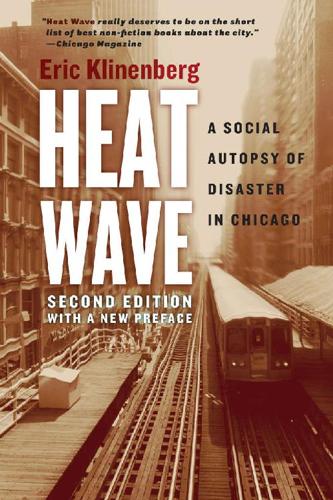
Heat Wave: A Social Autopsy of Disaster in Chicago
by
Eric Klinenberg
Published 11 Jul 2002
Everything in its path: Destruction of community in the Buffalo Creek flood. New York: Simon and Schuster. . 1994. A new species of trouble: The human experience of modern disasters. New York: W. W. Norton. Esping-Anderson, Gøsta. 1990. The three worlds of welfare capitalism. Princeton, N.J.: Princeton University Press. . 1999. Social foundations of postindustrial economies. Oxford: Oxford University Press. Ettema, James, and Theodore Glasser. 1998. Custodians of conscience. New York: Columbia University Press. Fallows, James. 1996. Breaking the news: How the media undermine American democracy. New York: Vintage. Farmer, Paul. 1999. Infections and inequalities: The modern plagues.
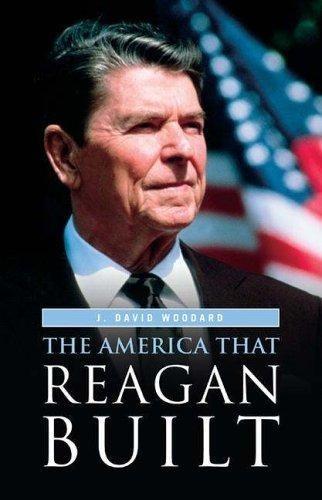
The America That Reagan Built
by
J. David Woodard
Published 15 Mar 2006
Reagan’s job was to inspire confidence in the future and reassure the country that things were going to work out. The optimism was not a trivial quality; instead, it was an essential approach to life that had carried him from Dixon, Illinois, to Hollywood and the White House. With him as actor the country was one vast stage. He translated the complexities of a postindustrial economy into phrases and stories that people could understand. Often the stories, while compelling from a political standpoint, were pure fiction. Reagan confused scenes from movies with real events. The most famous of these gaffes was a story he used in the 1976 and 1980 campaigns, and 42 THE AMERICA THAT REAGAN BUILT repeated in 1983 at the annual convention of Congressional Medal of Honor winners.

Iron Sunrise
by
Stross, Charles
Published 28 Oct 2004
And the Eschaton had given them gifts: cornucopias, robot factories able to produce any designated goods to order, given enough time, energy, and raw materials. Stocked with a library of standard designs, a cornucopia was a general-purpose tool for planetary colonization. Used wisely, they enabled many of the scattered worlds to achieve a highly automated postindustrial economy within years. Used unwisely, they enabled others to destroy themselves. A civilization that used its cornucopia to produce nuclear missiles instead of nuclear reactors — and more cornucopias — wasn’t likely to outlast the first famine, let alone the collapse of civilization that was bound to follow when one faction or another saw the cornucopia as a source of military power and targeted it.

People, Power, and Profits: Progressive Capitalism for an Age of Discontent
by
Joseph E. Stiglitz
Published 22 Apr 2019
These changing economic circumstances necessitate a changing role for government. Not only what the government does has had to change, but also how it does it. The reason that regulations and public expenditures increased is not a power grab by politicians, but because we had to, if we were to have a dynamic, well-functioning twenty-first-century innovative, urban, postindustrial economy. None of our successes in managing these issues arose from each individual going it alone. All involve cooperation—and in time, that cooperation has expanded from the folkloric American image of the community getting together to raise a barn, to more systemic ways of working together, including agreeing to certain rules, regulations, and compromises of unbridled personal liberty.

Make Your Own Job: How the Entrepreneurial Work Ethic Exhausted America
by
Erik Baker
Published 13 Jan 2025
This crisis, in turn, reinvigorated the entrepreneurial work ethic, as creating one’s own job appeared to offer liberation from a sputtering labor market, and “innovative” industrial leaders in high-technology manufacturing promised to chart a path forward for the American economy—with the help of torrents of federal defense spending. By the late 1960s, the wheel had completed another revolution. The postwar and increasingly “postindustrial” economy created by midcentury entrepreneurs once again began to exhaust its ability to guarantee low unemployment and sustained growth. The poor and jobless were prescribed another regimen of own-job-creation by federal policymakers and private-sector philanthropists, through a battery of training programs, small-scale lending initiatives, and changes to business regulations, the tax code, and welfare benefits.

Physics of the Future: How Science Will Shape Human Destiny and Our Daily Lives by the Year 2100
by
Michio Kaku
Published 15 Mar 2011
Often, the educational system does not produce enough skilled workers, so companies have to cope with a less-educated workforce. Corporations go begging for skilled workers whom the educational system often does not produce. Even in a depressed economy, there are jobs that go unfilled by skilled workers. But one thing is clear. In a postindustrial economy, many of the old blue-collar factory jobs are gone for good. Over the years, economists have toyed with the idea of “reindustrializing America,” until they realize that you cannot turn back the hands of time. The United States and Europe went through the transition from a largely industrial to a service economy decades ago, and this historic shift cannot be reversed.

An Empire of Wealth: Rise of American Economy Power 1607-2000
by
John Steele Gordon
Published 12 Oct 2009
In 1950 some 496,000 college degrees were awarded, twice the number of a decade earlier. Between 1945 and 1952 the federal government spent $14 billion on GI educational benefits but added far more than that to the human capital that would power the postwar economy. Considered as a “public work,” the GI Bill proved to be the Erie Canal of the new, postindustrial economy that was then, quite unrecognized, coming into being. The GI Bill also powered a social revolution. It opened up high-level jobs to many segments of the population that had rarely known such jobs before, thus greatly enlarging and diversifying the country’s economic elite, which had long been dominated by people with British or northwest European names.

From Counterculture to Cyberculture: Stewart Brand, the Whole Earth Network, and the Rise of Digital Utopianism
by
Fred Turner
Published 31 Aug 2006
Across the 1970s and 1980s, as the communes of the back-to-the-land movement crumbled and disappeared, Stewart Brand and the entrepreneurs of the Whole Earth group preserved these hopes by welding them to the computer technologies and flexible organizational practices of the rapidly emerging postindustrial economy. By the 1990s, it seemed to many as if the digital networks on [ 256 ] Chapter 8 which that economy increasingly depended would in fact bring to life the New Communalist dream of breaking the bonds of institutional power and freeing individuals to pursue their own holistic lives. Even today, discussions of digital technologies and the network economy continue to invoke New Communalist ideals.

Terms of Service: Social Media and the Price of Constant Connection
by
Jacob Silverman
Published 17 Mar 2015
We live amid an atmosphere of information. It’s numinous, spectral, but malleable. This sense of enchantment explains why every neoliberal dispatch from a remote African village must note the supposedly remarkable presence of cell phones. They too have access to information, that precious resource of postindustrial economies. All of this is part of what I call the informational appetite. It’s our total faith in raw data, in the ability to extract empirical certainties about life’s greatest mysteries, if only one can deduce the proper connections. When the informational appetite is layered over social media, we get the messianic digital humanitarianism of Mark Zuckerberg.

Capitalism in America: A History
by
Adrian Wooldridge
and
Alan Greenspan
Published 15 Oct 2018
Paradoxically, America’s decision to reduce its links with the European labor market helped to integrate the northern and southern labor markets. 2000 The most striking thing about the U.S. labor force was how much it depended on brain work rather than physical work: most workers manipulated symbols rather than fashioned objects. Thirty percent of workers had a college degree and fewer than 10 percent had not completed high school. Over half of the workforce worked in white-collar work—in the professions and in the service sector. The flip side of the expansion of the postindustrial economy was the contraction of the old industrial economy. Only 13 percent of the labor force worked in manufacturing and 2 percent in agriculture. Trade unions withered: only 13 percent of the workforce belonged to unions, and union penetration was bigger in the public sector than in the private sector.

Your Computer Is on Fire
by
Thomas S. Mullaney
,
Benjamin Peters
,
Mar Hicks
and
Kavita Philip
Published 9 Mar 2021
Nothing Is Virtual When we speak of “fire” in this volume, we do so in three interconnected ways. Our first usage is literal. Despite widespread tropes that portray computing and new media as immaterial and disembodied—whether through an emphasis on “virtual” reality, “telepresence,” “the Cloud,” “streaming,” the “postindustrial” economy, or otherwise—computing and new media are nothing if not entirely physical, material, and organic. They are physical machines, propelled by fire both material and metabolic. When they run, they run hot; and when they work hard, they run hotter. Data centers alone account for more than 2 percent of global energy use, energy consumption predicted to grow with the expansion of the Internet of Things.4 (Google emitted over 50 kilograms of CO2 in the time it took for you to read this sentence.)
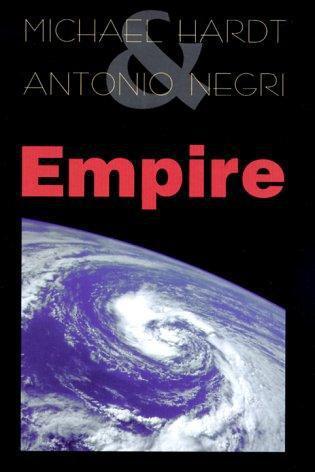
Empire
by
Michael Hardt
and
Antonio Negri
Published 9 Mar 2000
Services cover a wide range ofactivities from health care, education, and finance to transportation, entertain- ment, and advertising. The jobs for the most part are highly mobile and involve flexible skills. More important, they are characterized in general by the central role played by knowledge, information, affect, and communication. In this sense many call the postindustrial economy an informational economy. The claim that modernization is over and that the global economy is today undergoing a process ofpostmodernization to- ward an informational economy does not mean that industrial pro- duction will be done away with or even that it will cease to play an important role, even in the most dominant regions ofthe globe.
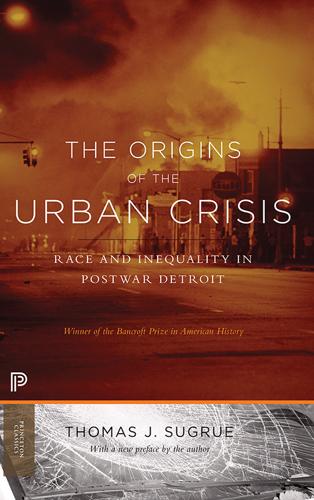
The Origins of the Urban Crisis
by
Sugrue, Thomas J.
Hospitals and universities, buoyed by large-scale federal expenditures and often unionized, proved to be the only reliable source of job growth in northern cities in the wake of deindustrialization. City government employment, often forced open by civil rights activism in a story that still needs to be told, became an increasingly important employment niche for minority workers left behind in the postindustrial economy. Still, meds, eds, and government jobs are particularly vulnerable to state and federal budget cutting. Urban hospitals are jeopardized by the unavailability of health insurance, an influx of impoverished patients, skyrocketing malpractice and equipment costs, and by the gradual suburbanization of health care.

The Gods of New York: Egotists, Idealists, Opportunists, and the Birth of the Modern City: 1986-1990
by
Jonathan Mahler
Published 11 Aug 2025
Factories that had manufactured goods were replaced by investment firms that manufactured debt: perpetual floating rate notes, yield curve notes, and, above all, the so-called junk bonds fueling America’s unprecedented corporate takeover craze. Profits soared. In 1985, the city’s biggest investment bank, Salomon Brothers, made $760 million (more than $2.2 billion in 2024 dollars)—surpassing the entire industry’s annual earnings seven years earlier. In a matter of years, a whole new postindustrial economy had sprung to life, driven by what economists called the “FIRE” sector: finance, insurance, and real estate. The rising salaries, bonuses, and paper profits generated disposable income that fertilized the formerly barren city. A new, guilt-free consumerism bloomed. The galleries of SoHo became so inundated with collectors that dealers maintained waiting lists for popular artists; the ballrooms of Manhattan’s luxury hotels buzzed with debutante balls and bar mitzvah receptions; the dining rooms of Le Cirque and the 21 Club bustled with bankers.
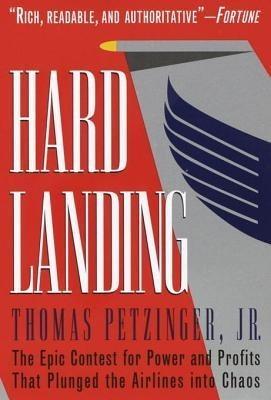
Hard Landing
by
Thomas Petzinger
and
Thomas Petzinger Jr.
Published 1 Jan 1995
USAir by 1992 was the last of the original local-service operators. Few airlines had been more brilliantly managed or more consistently profitable in the years immediately preceding and following deregulation. Much of its success was due to its near-monopoly of Pittsburgh, which flourished as a medical and high technology center in the postindustrial economy of the 1980s. Pittsburgh was also one of the country’s most valuable hubs, perfectly situated among the Great Lakes, New England, and mid-Atlantic regions. USAir was a short-haul airline, Chairman Ed Colodny liked to say, “because that’s the way the country’s built east of the Mississippi River.”